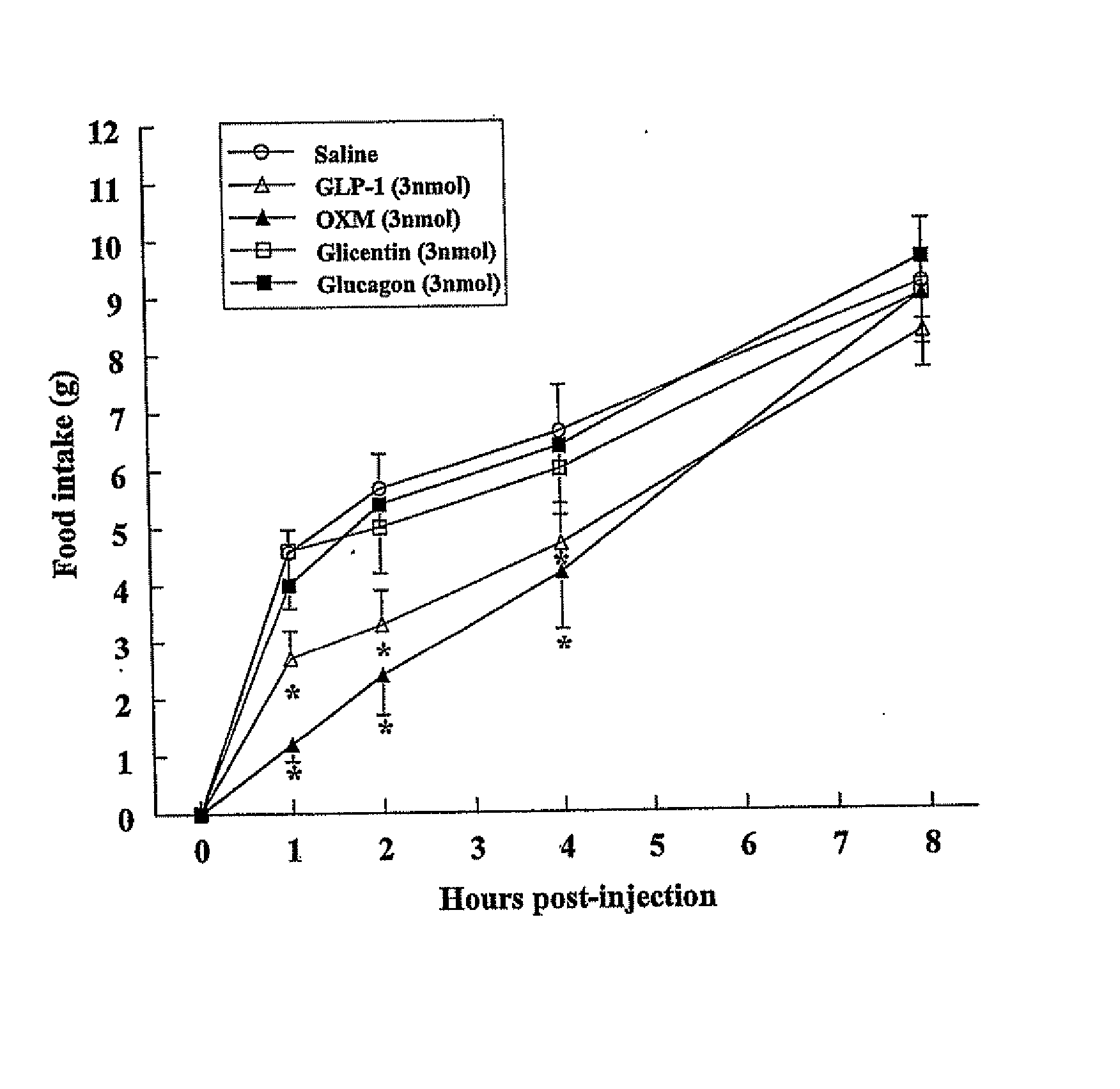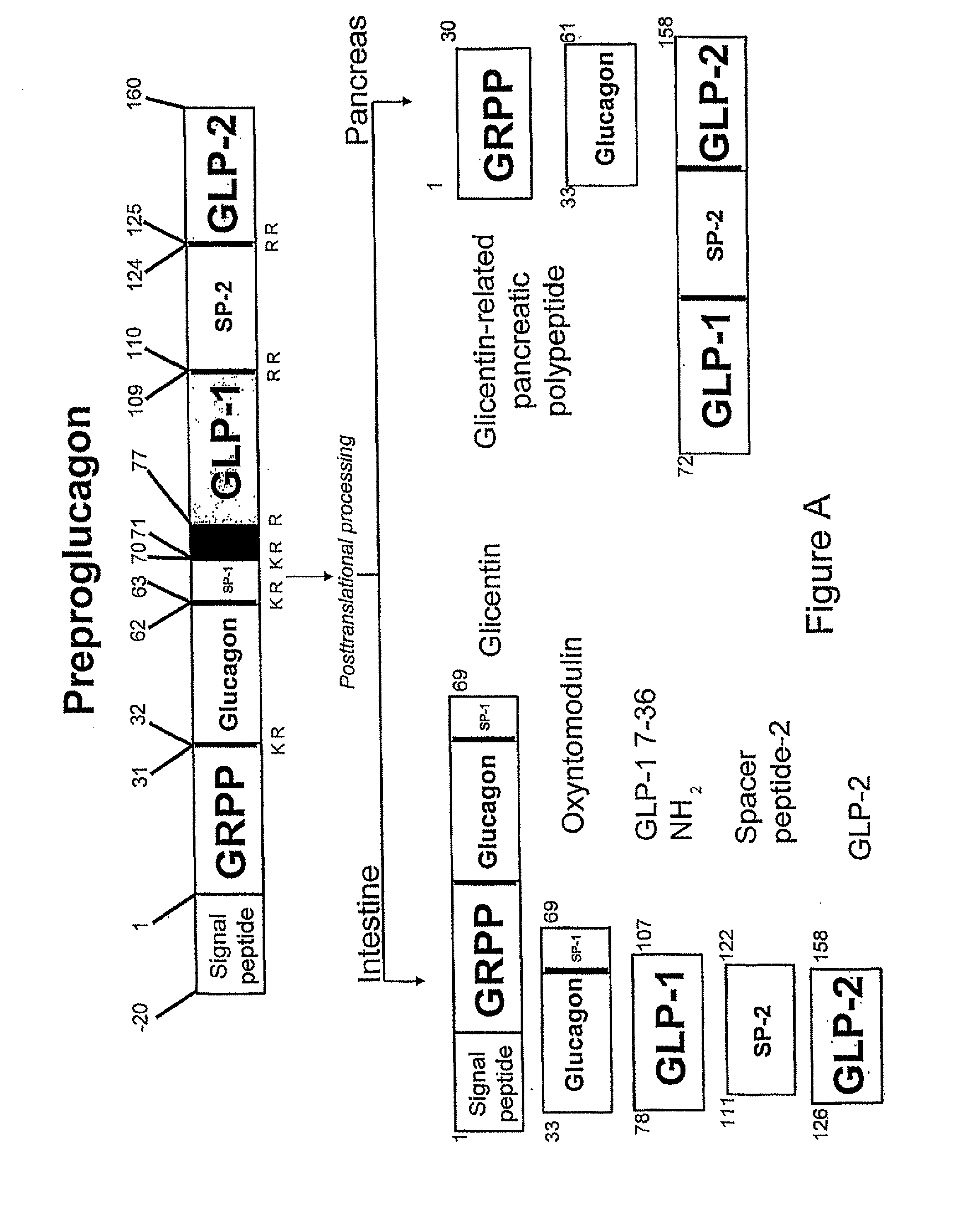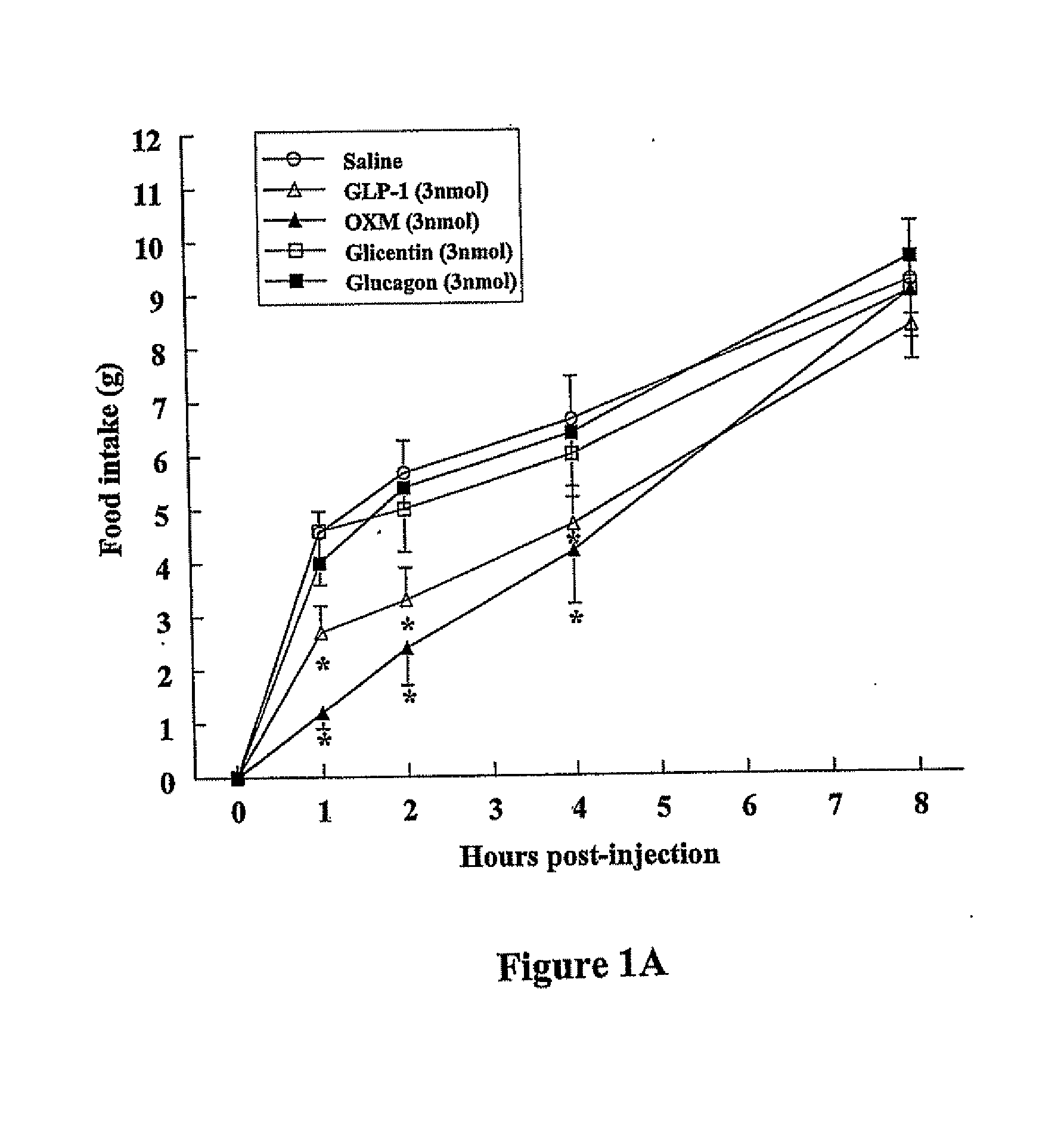Modification of Feeding Behaviour
a feeding behaviour and modification technology, applied in the field of feeding behaviour modification, can solve the problems of reducing quality of life, lack of effective treatment, and high incidence, and achieve the effects of reducing weight, increasing energy expenditure, and inhibiting food intak
- Summary
- Abstract
- Description
- Claims
- Application Information
AI Technical Summary
Benefits of technology
Problems solved by technology
Method used
Image
Examples
example 1
OXM Causes a Potent Decrease in Fasting-Induced Refeeding when Injected Both ICV and iPVN
Peptides and Chemicals
[0110] GLP-1, glicentin, glucagon, and SP-1 were purchased from Peninsula Laboratories, Inc. (St. Helens, UK). OXM was purchased from IAF BioChem Pharma (Laval, Canada). Exendin-4 and exendin-(9-39) were synthesised at Medical Research Council, Hemostasis Unit, Clinical Sciences Center, Hammersmith Hospital, London, UK using F-moc chemistry on an 396 MPS peptide synthesiser (Advanced ChemTech, Inc.) and purified by reverse phase HPLC on a C8 column (Phenomex, Macclesfield, UK). The correct molecular weight was confirmed by mass spectrometry. All chemicals were purchases from Merck & Co. (Lutterworth, Leicester, UK) unless otherwise stated.
Animals
[0111] Adult male Wistar rats (ICSM, Hammersmith Hospital) were maintained in individual cages under controlled conditions of temperature (21-23° C.) and light (12 h of light, 12 h of darkness) with ad libitum access to food (...
example 2
Peripheral Administration of OXM Also Reduces Food Intake and Body Weight
Peptides and Chemicals
[0140] OXM was purchased from IAF BioChem Pharma (Laval, Canada). GLP-1 was purchased from Peninsula Laboratories Inc. (St. Helens, UK). Exendin 9-39 was synthesised at Medical Research Council, Hemostasis Unit, Clinical Sciences Centre, Hammersmith Hospital, London, UK using F-moc chemistry on a 396 MPS peptide synthesizer (Advanced ChemTech Inc., Louisville, Ky.) and purified by reverse phase HPLC on a C8 column (Phenomex, Macclesfield, UK), using a gradient of acetonitrile on 0.1% trifluoroacetic acid. Correct molecular weight was confirmed by mass spectrometry. All chemicals were purchases from Merck Eurolab Ltd. (Lutterworth, Leicestershire, UK), unless otherwise stated.
Animals
[0141] Adult male Wistar rats (180-200 g) were maintained in individual cages under controlled conditions of temperature (21-23° C.) and light (12 hours light, 12 hours dark) with ad libitum access to stan...
example 3
Investigation of The Effect of OXM Infusion on Food Intake in Human Subjects
Methods
Study 1
[0169] The study design was a double-blind placebo-controlled crossover, see FIG. 12. 13 healthy volunteers (age 27±2 yrs; BMI 25.3±0.7 kg−2) received a 90 minute intravenous infusion of OXM (3.0 μmol / kg / min) and an infusion of saline≧1 week apart, in random order OXM was dissolved in saline containing haemaccel (5% by volume) to reduce adsorption to the syringe and tubing. Volunteers completed a food diary for three days prior to each infusion and for the subsequent 24 hours. Subjects were instructed to follow a similar diet on the days preceding each infusion. They consumed an identical meal (of their choice) on the night before each infusion and fasted from 9 pm.
[0170] On each study day intravenous cannulae were inserted bilaterally into arm veins, one for administration of the infusion, while the other was used for blood-sampling. Subjects were attached to a cardiac monitor and blood ...
PUM
| Property | Measurement | Unit |
|---|---|---|
| temperature | aaaaa | aaaaa |
| volume | aaaaa | aaaaa |
| temperature | aaaaa | aaaaa |
Abstract
Description
Claims
Application Information
 Login to View More
Login to View More - R&D
- Intellectual Property
- Life Sciences
- Materials
- Tech Scout
- Unparalleled Data Quality
- Higher Quality Content
- 60% Fewer Hallucinations
Browse by: Latest US Patents, China's latest patents, Technical Efficacy Thesaurus, Application Domain, Technology Topic, Popular Technical Reports.
© 2025 PatSnap. All rights reserved.Legal|Privacy policy|Modern Slavery Act Transparency Statement|Sitemap|About US| Contact US: help@patsnap.com



